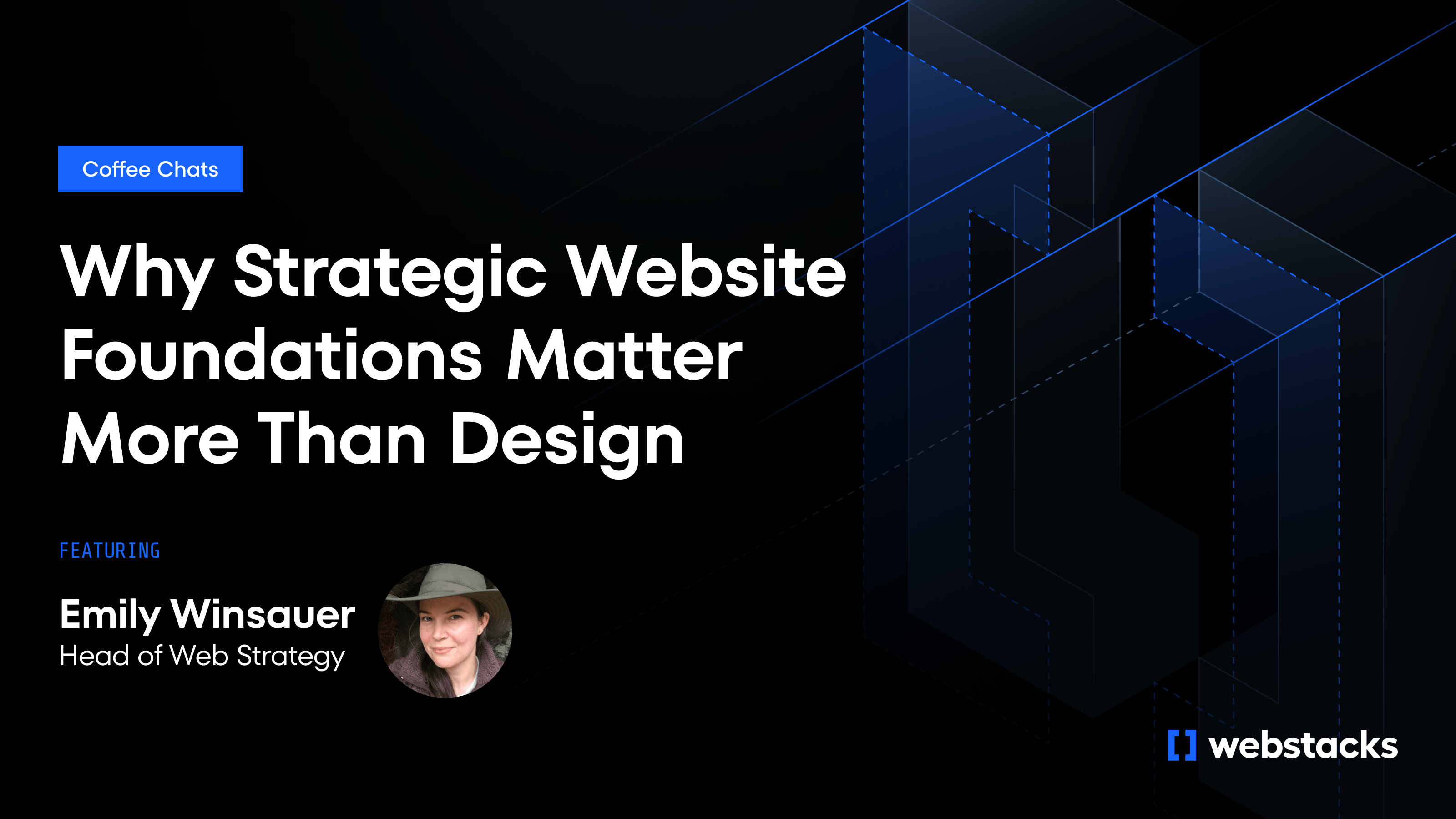Traditional monolithic systems are holding B2B companies back. Once dependable, these tightly coupled architectures now create more problems than they solve and lock teams into tools that no longer serve their needs.
As customer expectations rise and market demands shift, rigid systems leave businesses struggling to keep up. That's why more companies are turning to composable tech stacks. This approach replaces bulky, all-in-one platforms with modular components built for flexibility.
Instead of forcing every function through a single suite, composable architectures let you handpick the best tools for each job and connect them into a cohesive system.

What Is a Composable Tech Stack?
A composable tech stack is a collection of specialized, independent technologies that work together through defined interfaces. Unlike monolithic systems where everything's tightly integrated, composable architectures let you pick the best tool for each specific function.
Consider B2B marketing technology as an example. Traditional setups rely on a single marketing suite covering everything—email, social, analytics, and more. But these platforms often do a few things well while other features are mediocre.
With a composable approach, you handpick the best tool for each function, like Mailchimp for email or Google Analytics for data, and then connect them via APIs. It lets you build a tailored ecosystem that grows with your business needs, without getting bogged down by unnecessary features or compromises.
Three traits define a composable tech stack:
- Modularity: Each component focuses on doing one thing exceptionally well. This specialization creates better performance while allowing independent updates or replacements.
- Interoperability: Components communicate through standardized APIs, creating a cohesive system despite using tools from different vendors.
- Scalability: As your business grows, you can add or upgrade individual components without disrupting the entire system.
Think of a composable tech stack like LEGO bricks instead of a sculpture carved from a single stone block. With LEGO, you can add, remove, or rearrange pieces as needed. If one piece breaks or no longer fits your purpose, you replace just that piece, not the entire creation.
To see composability in action, read how Webstacks developed a modular website for Hatch.
What Are the Benefits of a Composable Tech Stack for B2B Startups and Enterprises?
A composable tech stack delivers advantages that help B2B companies with the following:
Agility
When market conditions shift, composable architectures let you pivot quickly by swapping individual components rather than rebuilding entire systems. The flexibility allows B2B companies to launch new features fast, test innovative approaches with minimal risk, and adapt to customer feedback.
Cost Efficiency
With composable tech stacks, you only pay for what you need. Instead of investing in bloated software suites packed with features you'll never use, you can select targeted tools that offer capabilities your business requires. You scale up individual components as your company grows and easily trim away anything that doesn't deliver value.
For example, a B2B software company might use an enterprise-grade CRM but pair it with a lightweight email tool to avoid the expense of an all-in-one marketing suite with features it'll never touch.
Freedom from Vendor Lock-in
Composable architectures free you from being tied down to a single provider. You can swap out underperforming components without needing a huge migration project, negotiate better terms because you have alternatives, and quickly adopt new and improved solutions as they hit the market
Improved Collaboration
When systems are modular, teams can work in parallel. Marketing can update content while developers roll out new features, sales can tweak CRM workflows without waiting on IT, and every specialist can stay focused on what they do best.
Scalability for Growth
As B2B companies expand, composable tech stacks grow with them. You can add tools as new needs emerge, replace entry-level solutions with enterprise options, and integrate acquisitions more smoothly.
What Are the Core Components of a Composable Tech Stack?
A composable tech stack consists of several elements that work together to create a powerful system:
Modular Architecture
The cornerstone of composability is modularity, which breaks your tech stack into discrete components. For B2B marketing teams, this means selecting tools for each function rather than using an all-in-one solution.
APIs
APIs (Application Programming Interfaces) serve as the connectors between components. They define how different tools communicate and share data, and support easy integration regardless of which vendors you choose.
Learn more: What is an API-first CMS?
Microservices
While monolithic applications run as single units, microservices break functionality into independent services. Each service handles a specific business capability and can be developed, deployed, and scaled independently.
Cloud Infrastructure
Cloud platforms provide the flexible foundation for composable tech stacks. They offer on-demand resources that scale with your needs, global availability for distributed teams, and reduced need for in-house infrastructure management.
Technology-Agnostic Approach
Composable architectures thrive on openness. They let you choose the best tool for each job, regardless of vendor. You're never locked into a single ecosystem and can adapt as better solutions emerge.

Essential Components for B2B Marketing
For marketing teams specifically, a composable tech stack includes:
- Frontend frameworks: React, Vue.js, or Angular create dynamic, responsive user experiences across devices.
- Backend services: Handle data processing, business logic, and system integration. These might be custom-developed or selected from specialized vendors.
- API management: Tools like Apigee or MuleSoft manage the growing complexity of API connections between components, providing security, monitoring, and governance.
- Headless CMS: Content management systems like Contentful or Sanity separate content creation from presentation.
- CRM systems: Tools like Salesforce or HubSpot manage customer relationships, track interactions, and provide data for personalization across channels.
- Analytics tools: Platforms like Mixpanel or Amplitude deliver insights into campaign performance and customer behavior.
What Are the Steps to Building a Composable Tech Stack?
Before building a composable tech stack, evaluate your business needs. And consider the core functions it must deliver. Then, take the following steps:
1. Choose Modular Components
When choosing tools, look for options built with an API-first approach and thorough documentation. Make sure each tool can scale as your business grows, offers an intuitive experience that fits your team's skill set, and is backed by strong vendor support with ongoing updates.
Also, consider the total cost of ownership, including support and future upgrades, not just the upfront license fees.
2. Plan Your Integration Strategy
Think about how your tools will talk to each other. For simple needs, connecting them directly with APIs is usually enough. If things get complicated, you can use integration platforms (iPaaS) to help link everything together. If you need data to move quickly between systems, use event-driven setups.
Many successful B2B implementations use middleware such as MuleSoft or Zapier to simplify integration complexity and reduce maintenance overhead.
3. Implement in Phases
Implement your new tech stack gradually, one step at a time, to keep things simple and avoid problems. Start by setting up your main data and content tools. Next, add the systems your customers will use, and then bring in analytics and optimization tools.
As your business changes, add more advanced features when you need them. This way, your tech stack grows with you, without causing big disruptions.
4. Monitor and Optimize
Keep a close eye on the numbers that matter most: how quickly your systems respond and stay online, how efficiently your team produces content, the speed at which you can launch campaigns, and the results you see in lead generation and conversion rates.
Don’t forget to measure marketing ROI by channel, so you always know what’s working and where to focus your efforts.
5. Build the Right Team
Success with composable architectures requires the right skills. You'll need technical marketers who understand both business needs and system capabilities, integration specialists who can connect diverse components, and data analysts who extract insights from across systems.
If you lack in-house expertise, consider partnering with agencies (such as Webstacks) experienced in composable implementations. Our guidance can accelerate your journey..
7. Create a Migration Strategy
When moving away from monolithic systems, start by listing out your current tools and matching each one to its new modular version. Focus on migrating your most important business functions first. Set up clear steps for moving and checking your data to make sure nothing gets lost or broken. While you’re making the switch, keep both your old and new systems running at the same time. This gives you a safety net in case anything goes wrong.
Embrace the Future with Composable Tech Stacks
The one-size-fits-all approach to technology no longer meets the pace or complexity of modern B2B demands. Composable tech stacks offer a better path—modular, adaptable, and built to scale with your business.
Making the switch requires a thoughtful re-evaluation of your current setup, identifying where flexibility is lacking, and designing a system that’s responsive from the ground up.




